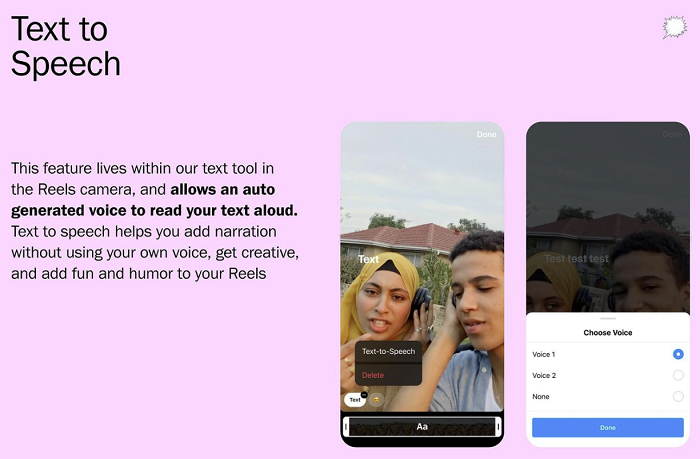SOCIAL
TikTok Adds Disney Character Voices to its Text-to-Speech Feature

This is a pretty cool announcement in itself, but in terms of timing, it’s also a brilliant example of corporate trolling, and clapping back at a competitor.
Today, Disney has announced a new partnership with TikTok which will enable TikTok users to choose from a range of Disney character voices for TikTok’s text-to-speech feature.
So now, instead of that regular, slightly too happy female voice that you hear over and over again in TikTok clips (I’m talking about you ‘Jessie’), you can use C-3PO or Rocket instead, which could be a good way to boost engagement, and will no doubt lead to new viral trends related to characters saying things that they probably shouldn’t.
But here’s why it’s extra great – just yesterday, Instagram announced that it’s adding text-to-speech to Reels, its TikTok replicant, along with its own voice effects tools.

Which, of course, trails TikTok significantly, as you’ve been able to add this to your TikTok clips since December last year, and as noted, it’s already a highly used feature in the app. Given this, it does make sense for Instagram to add the same, but it also means that TikTok is leading the way on another key innovation, and with Instagram constantly trailing, that will make it hard for it to win back young users, and become the cool place to be one again.
And now that Instagram finally catches up on this element, TikTok one-ups them straight away.
That was unlikely planned, as the feature has been announced to coincide with Disney+ Day, and couldn’t have been timed to align with Instagram’s feature launch. But still, it once again underlines that TikTok is the leader in the space, and that Instagram is the older, less cool app that catches up on the cool new thing months – almost a year – after it began trending.
And now, TikTok’s already advanced to the next stage, so Instagram’s speech-to-voice is second rate, a day after it’s released.
That is incredibly serendipitous timing for TikTok, and a perfect illustration of why it’s currently the most popular app, especially among younger, more tech-savvy audiences.
If Instagram, and parent company Meta, really want to win back the youth, they’ll need to take the lead in the space once again, and right now, they don’t look close to doing that. Meta CEO Mark Zuckerberg recently announced that the company will primarily focus on younger audiences moving forward, as part of a broader strategic shift to maximize long-term viability. But in the early stages of this new push, those efforts appear to only be focused on messaging, and trying to regain popularity by – somewhat ironically – partnering with TikTok influencers.
That will help increase exposure, but it’s not like anybody’s not aware of Facebook or what it does, so that’s not really going to matter. The question is, will it help to make Facebook, and Meta, more broadly, cool again?
Right now, it feels a little forced, like Meta’s trying too hard to ride the latest trends, and be ‘down with the kids’ in its outward communications.
The real winner for Meta on this front would be leading the next wave of innovation, and becoming the originator of new trends, based on the latest features and user response. Which is a more difficult path, as you can’t control what catches on and what doesn’t in this respect, but Meta can invest in new tools, and it can build features that are not available in other apps.
That hasn’t been Meta’s forte for the last 5-10 years – and oh look, that’s the timeframe in which it’s lost connection with younger audiences.

Facebook originally rose to prominence by beating MySpace, because it was better, it was cooler, and people eventually migrated to the blue app, and its functionality, instead. Instagram then rose to become the next cool place to be, so Facebook bought that, then Snapchat gained traction as the trending app of choice. Facebook tried to buy Snap too, but since then, it’s essentially lost its spot as the leader in creative innovation, with Snapchat’s Lenses becoming the leading trend-setter, in terms of key updates, then TikTok taking over after that.
When was the last time Facebook or Instagram had a must-see, must-use feature that got everyone talking? As noted, Snap Lenses have done this at regular intervals, while TikTok’s also been able to spark new trends with features like Duets, creative AR tools, and yes, text-to-speech.
Getting people talking about, and sharing these experiences is a key step, and Meta, right now, is not the leader in any sense.
It’s interesting to see this illustrated so clearly in one announcement, which, again, was likely not planned that way. Which may make it even more significant in this respect.
